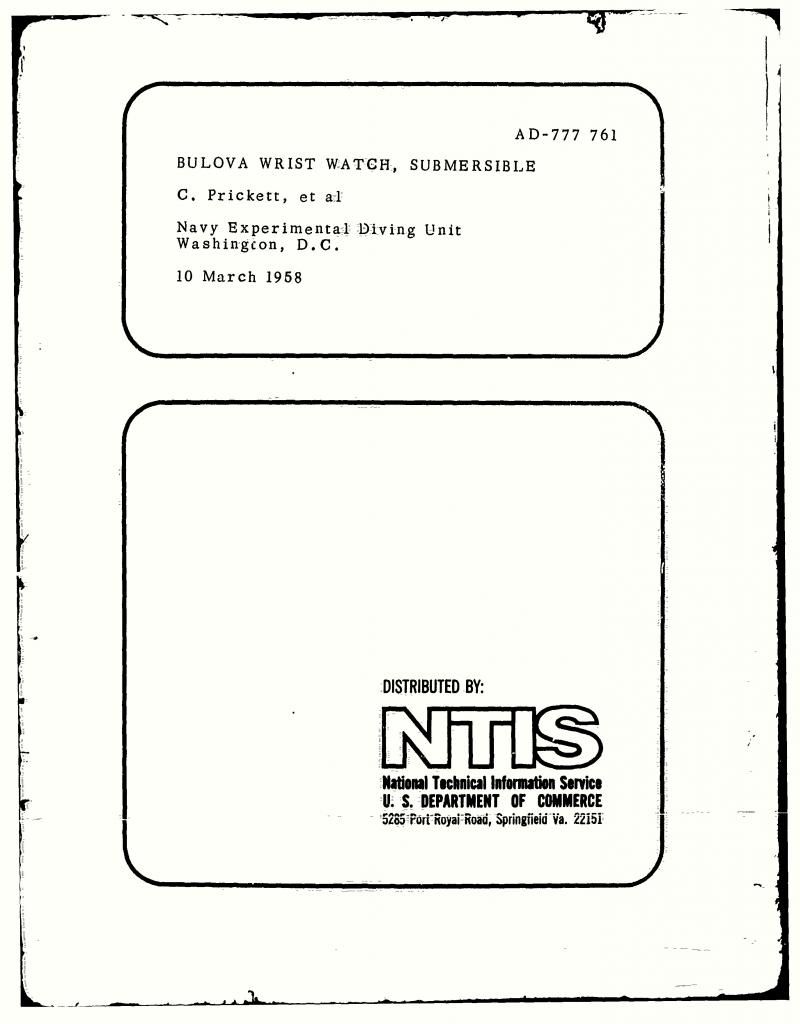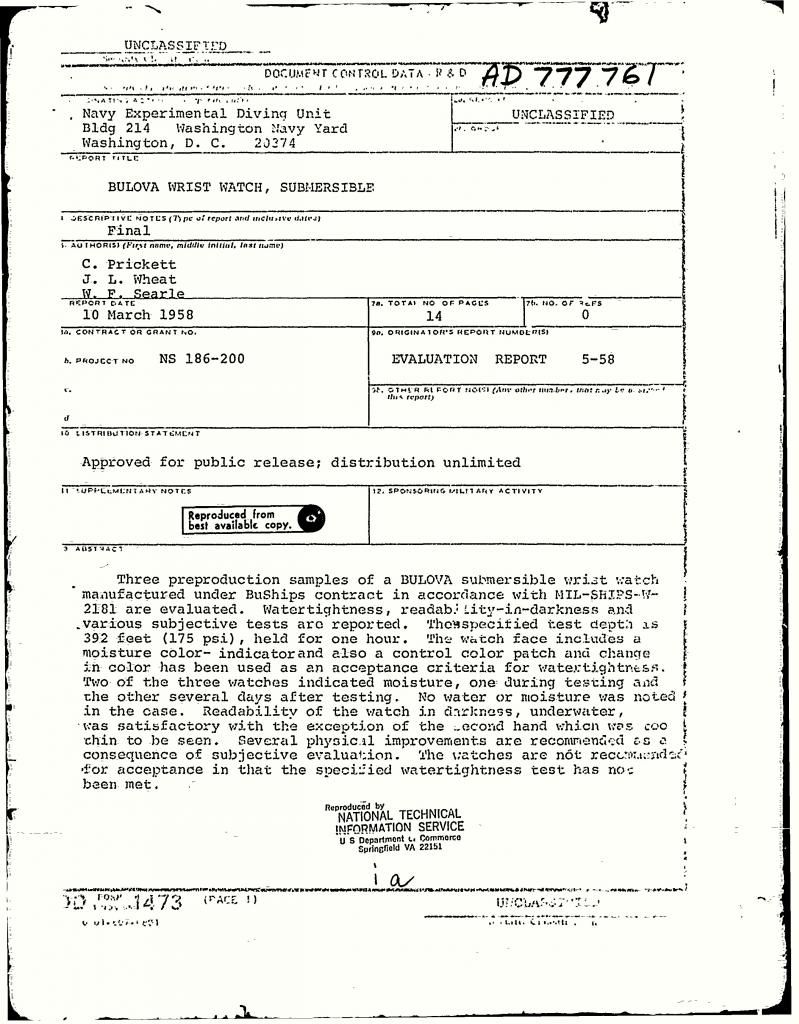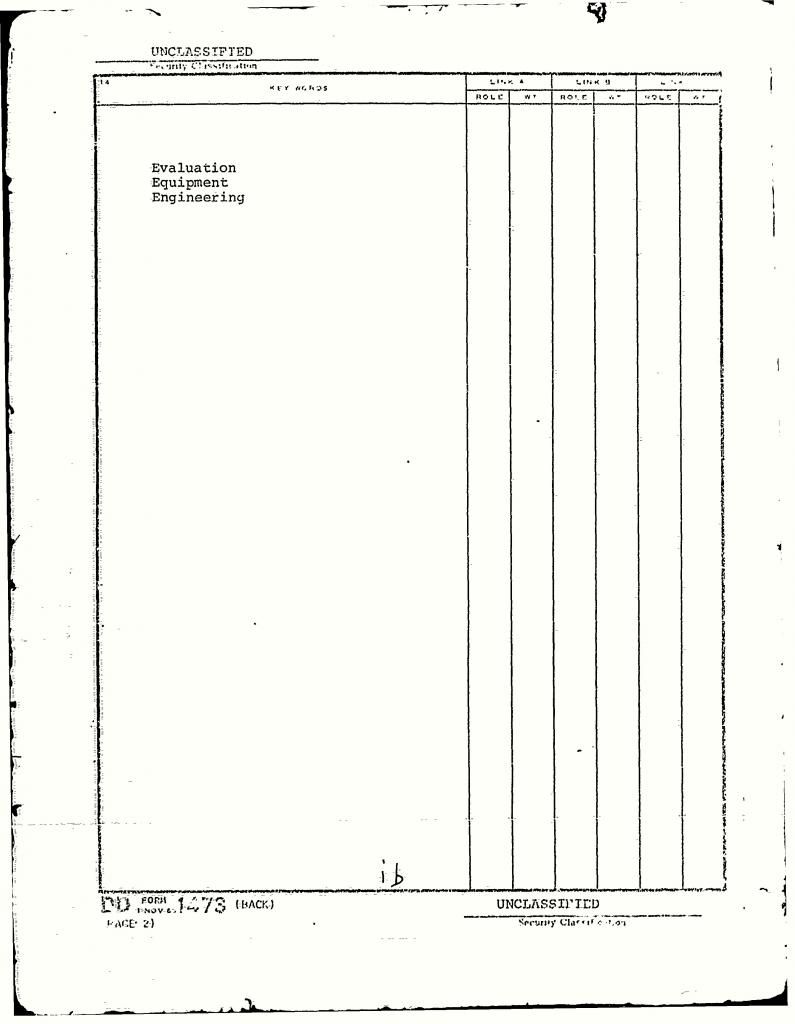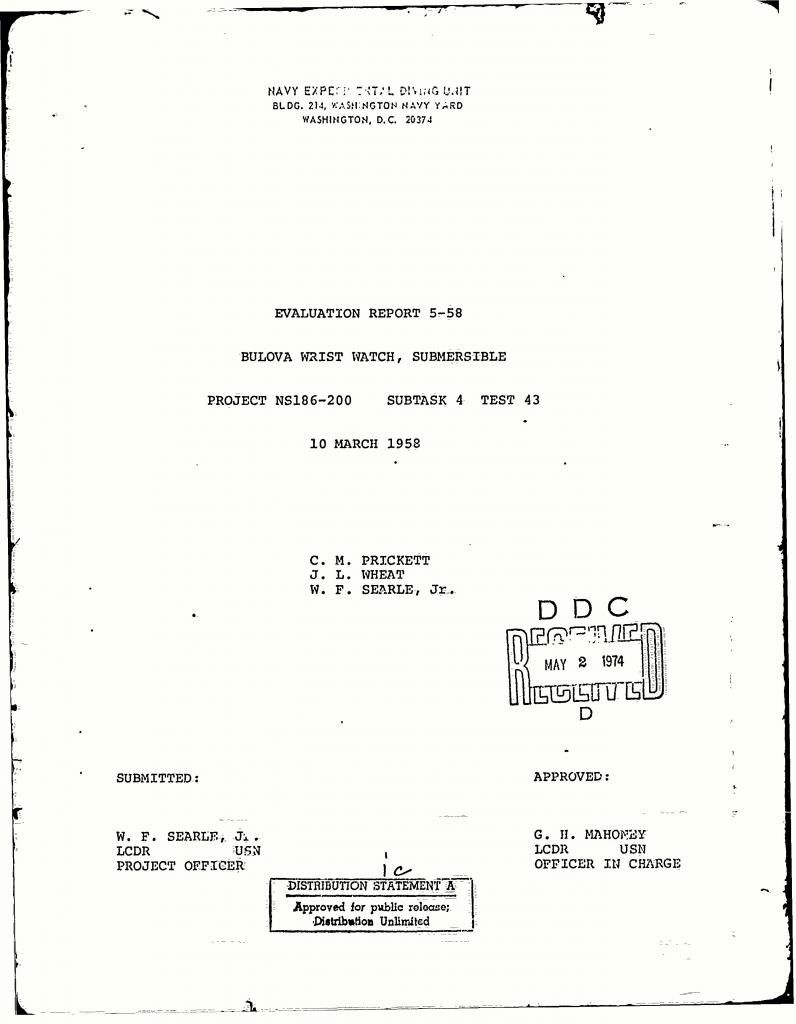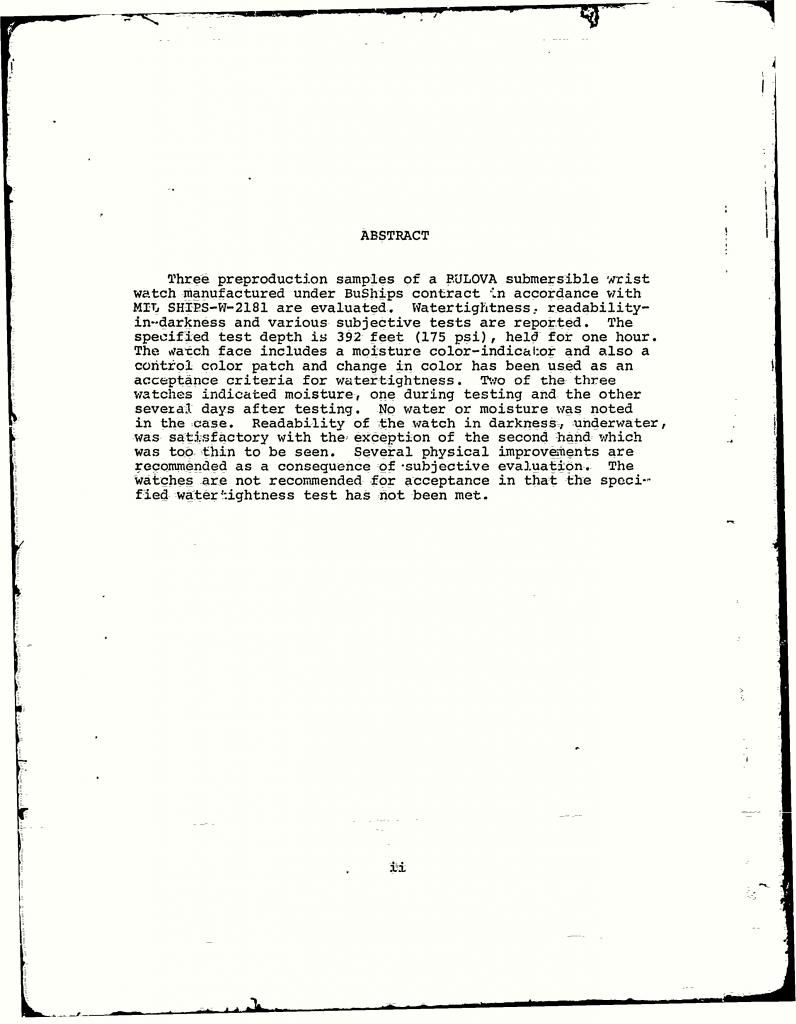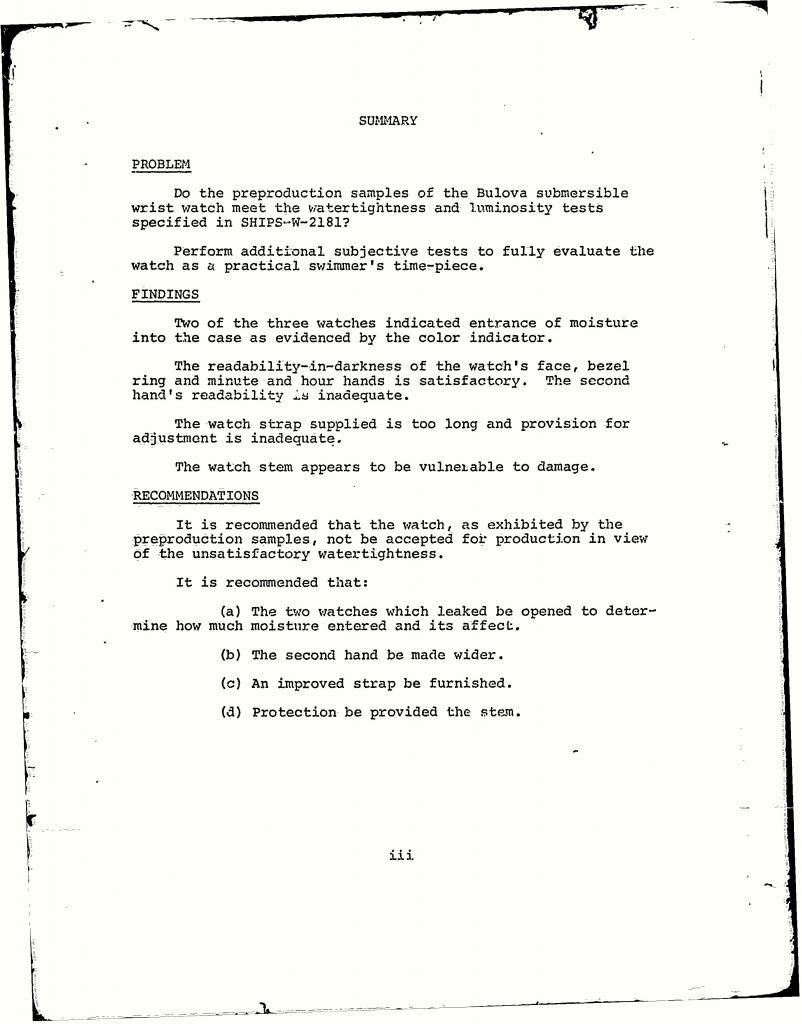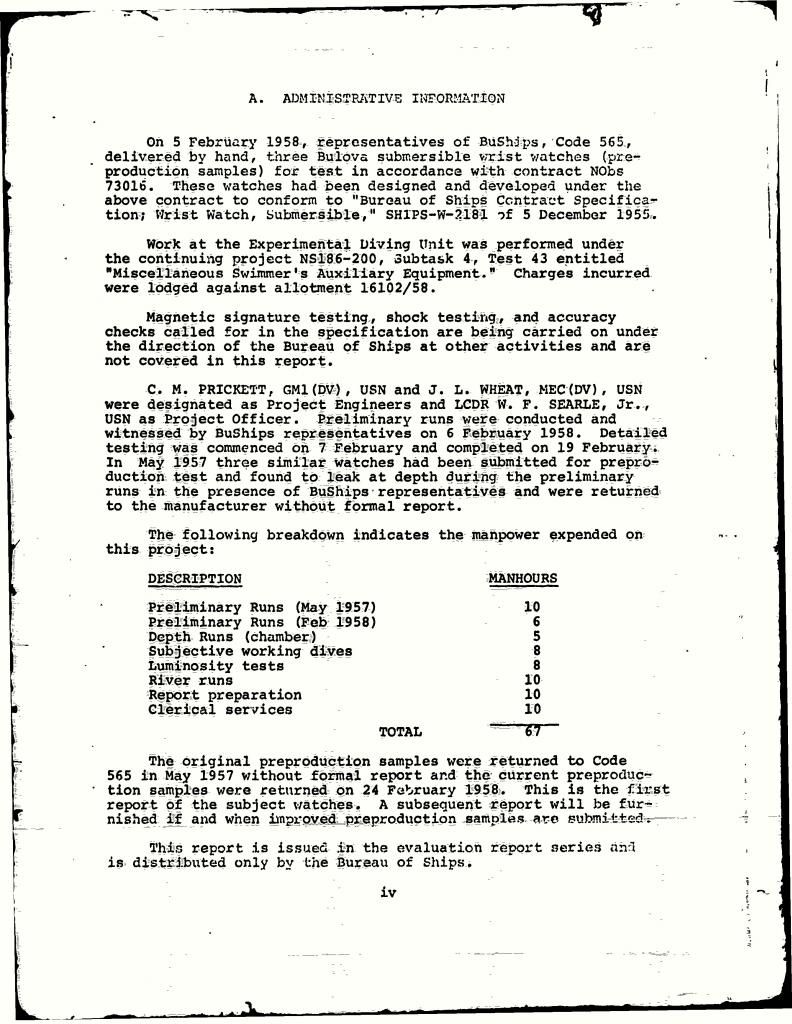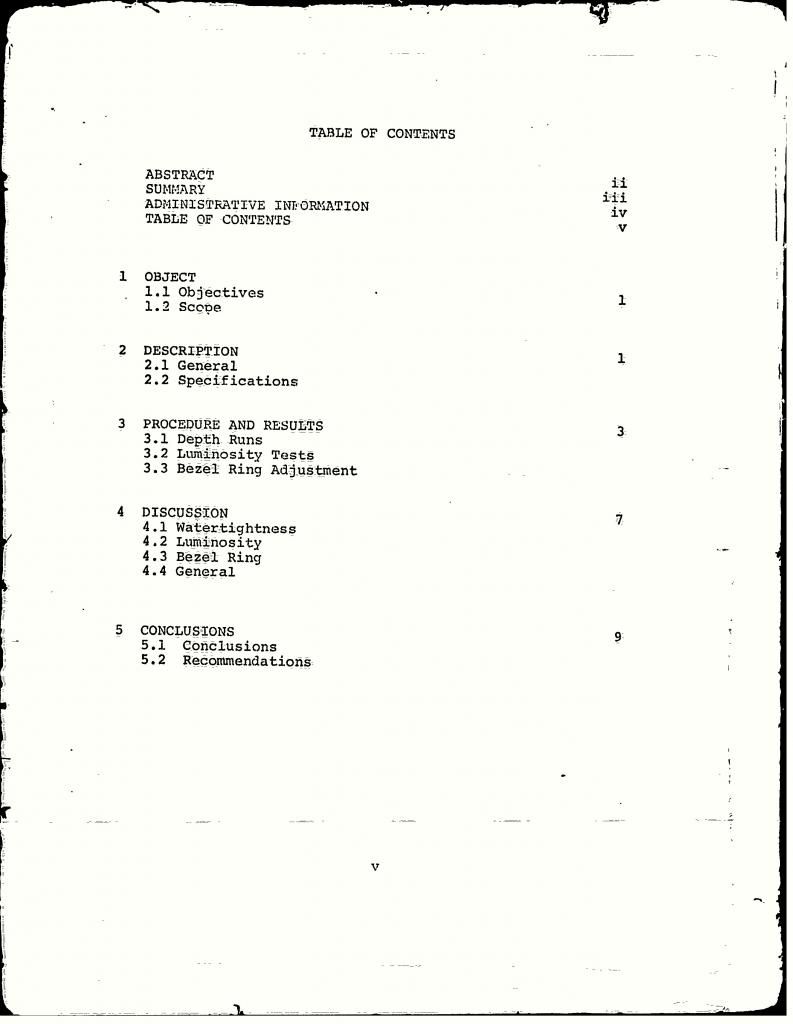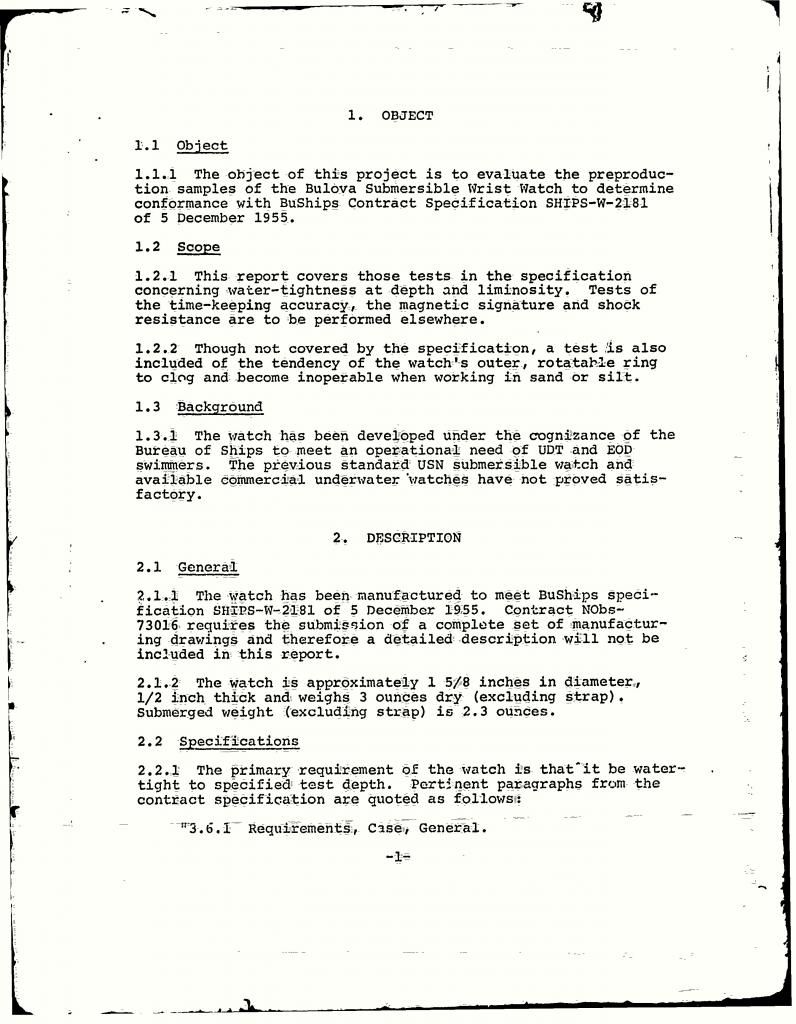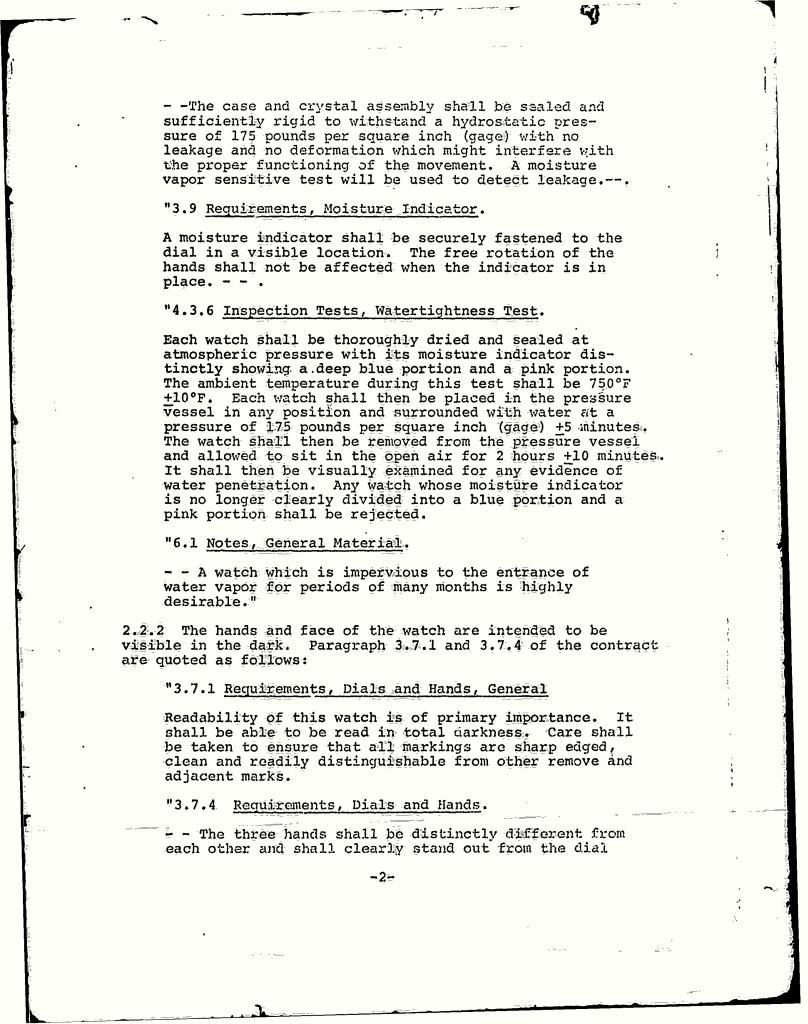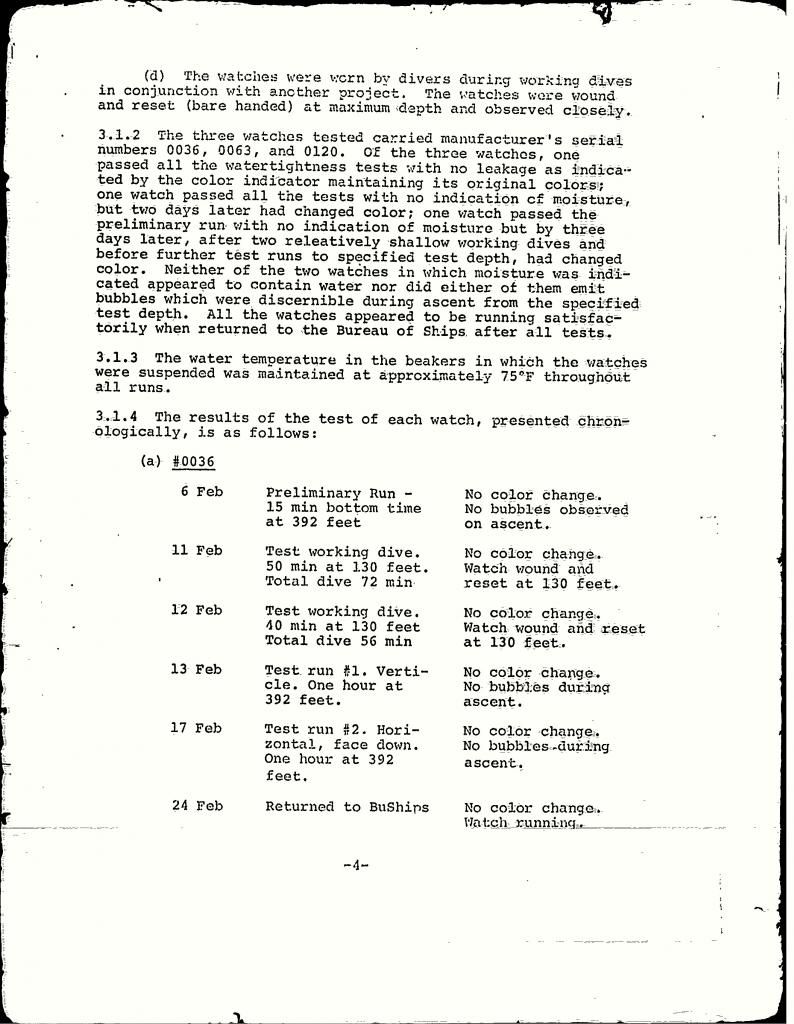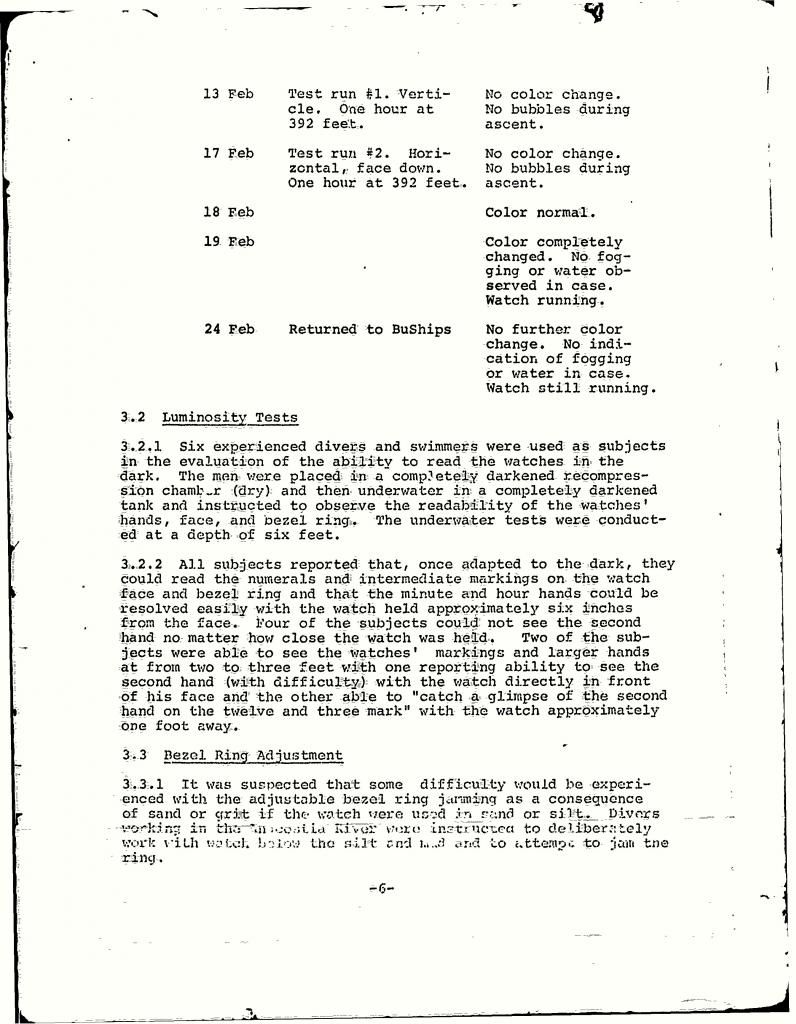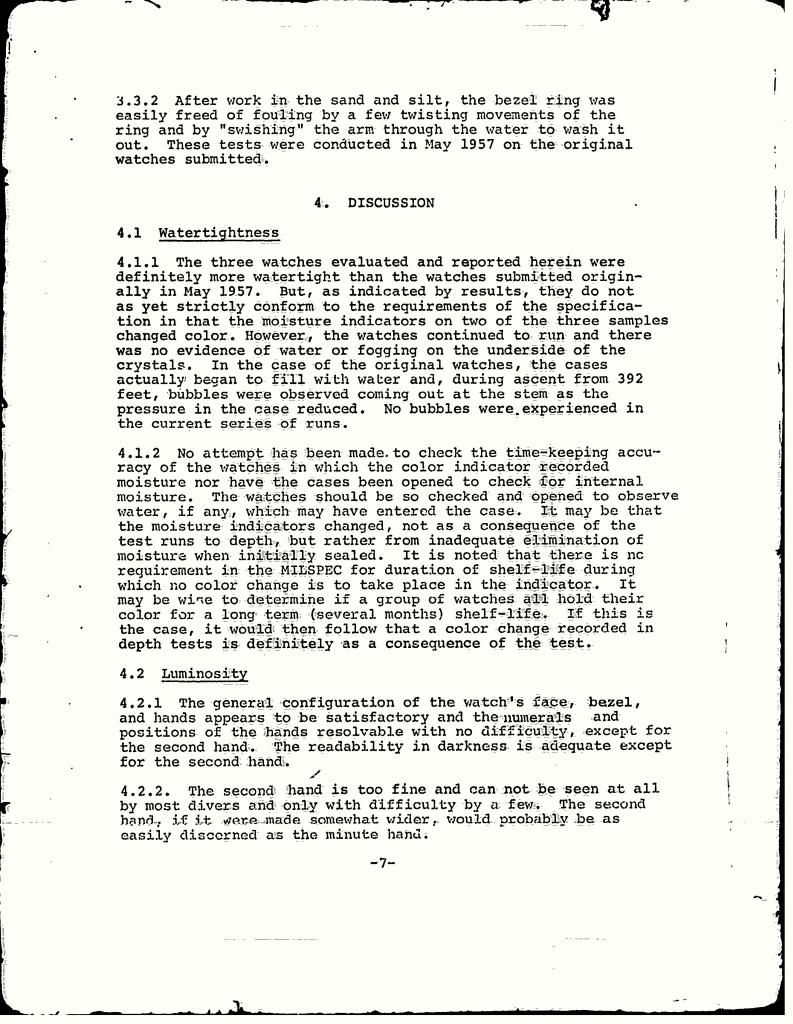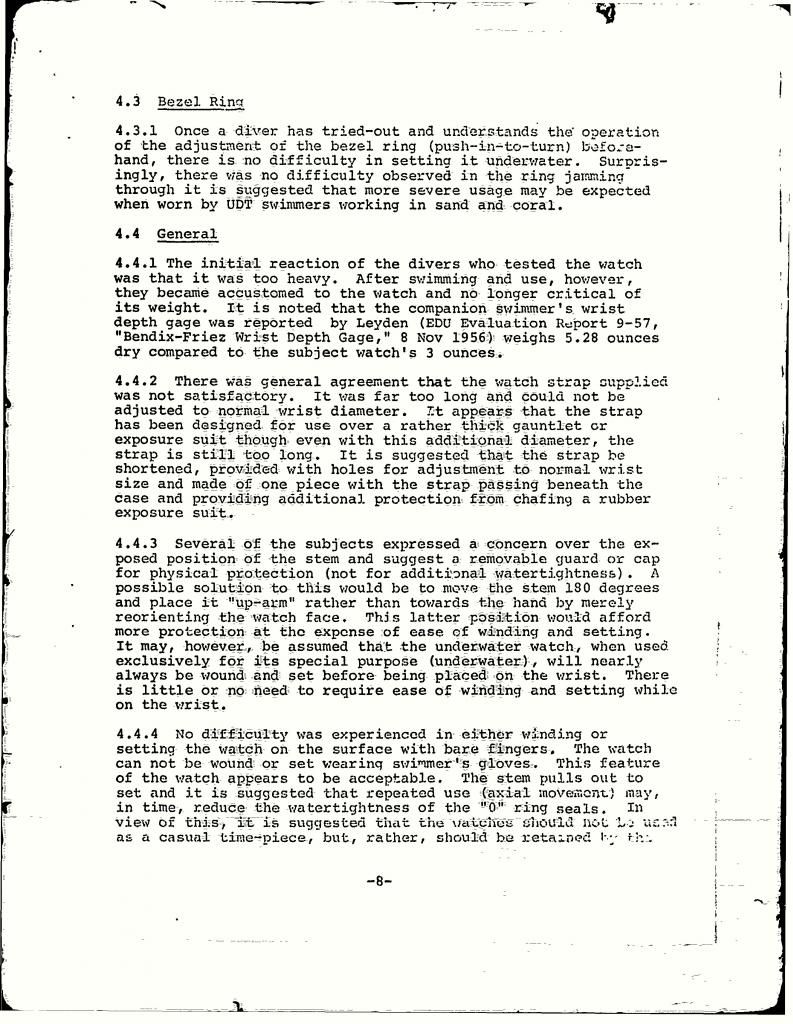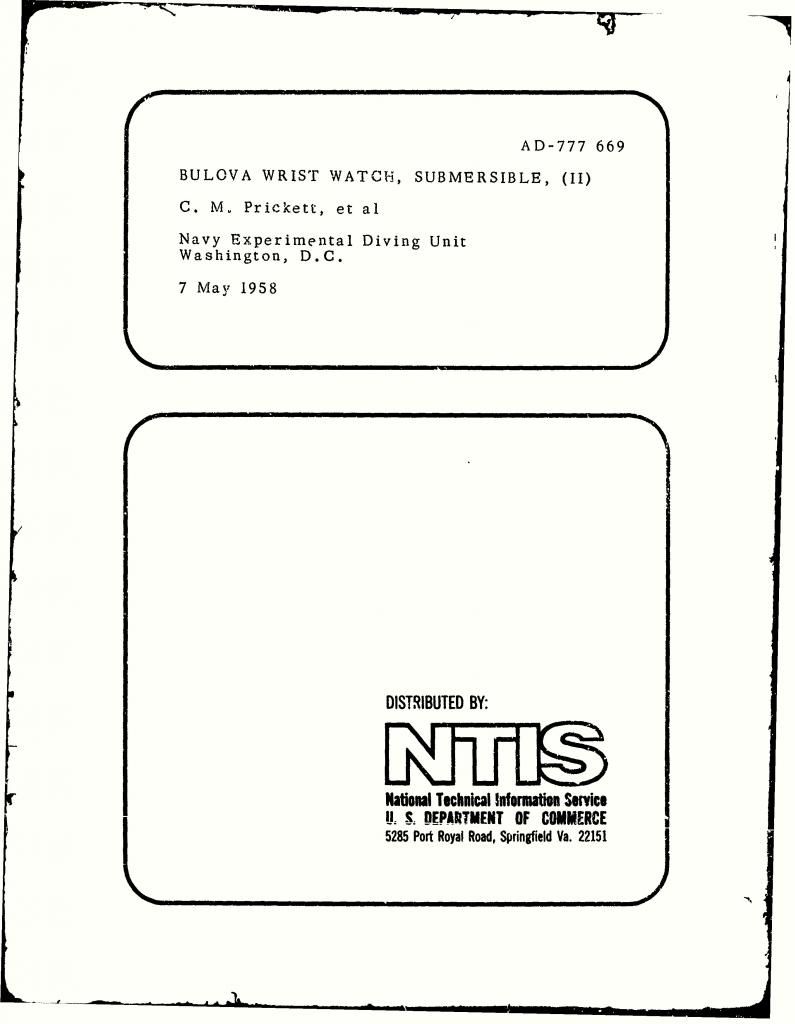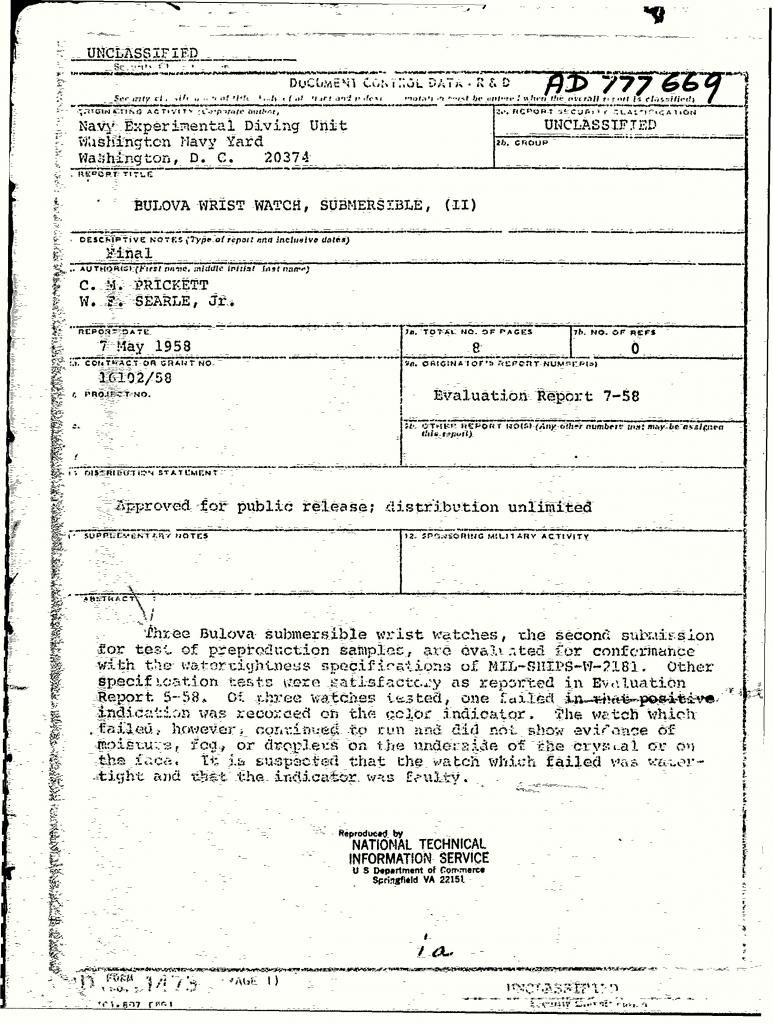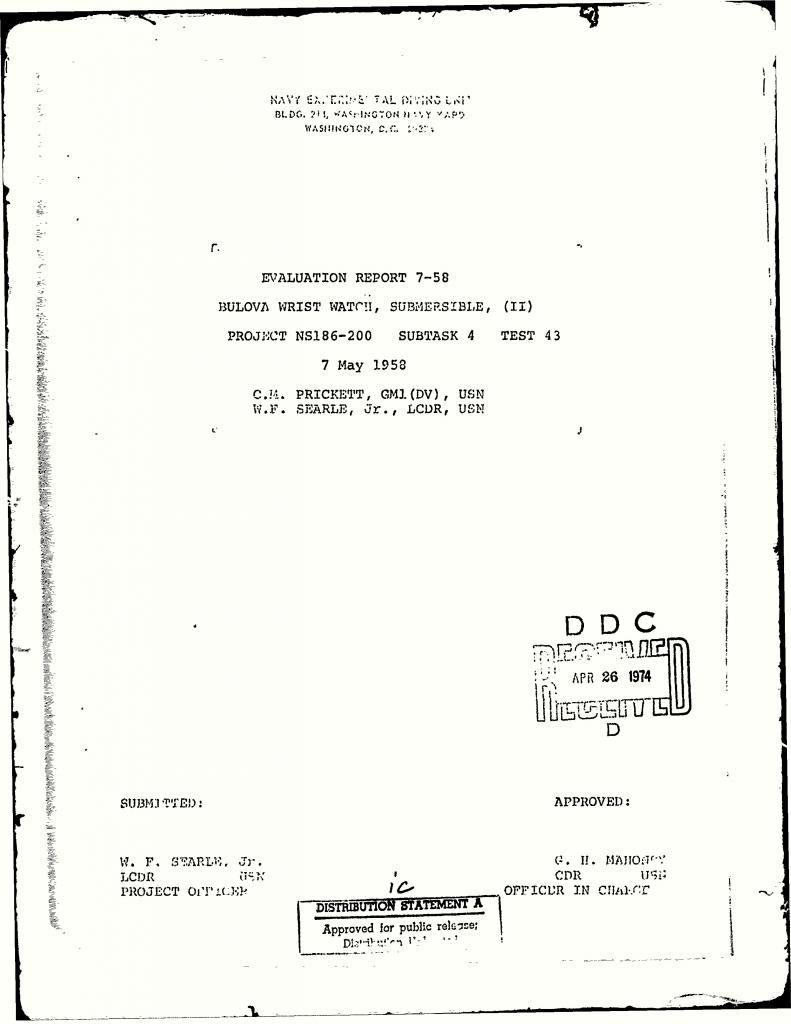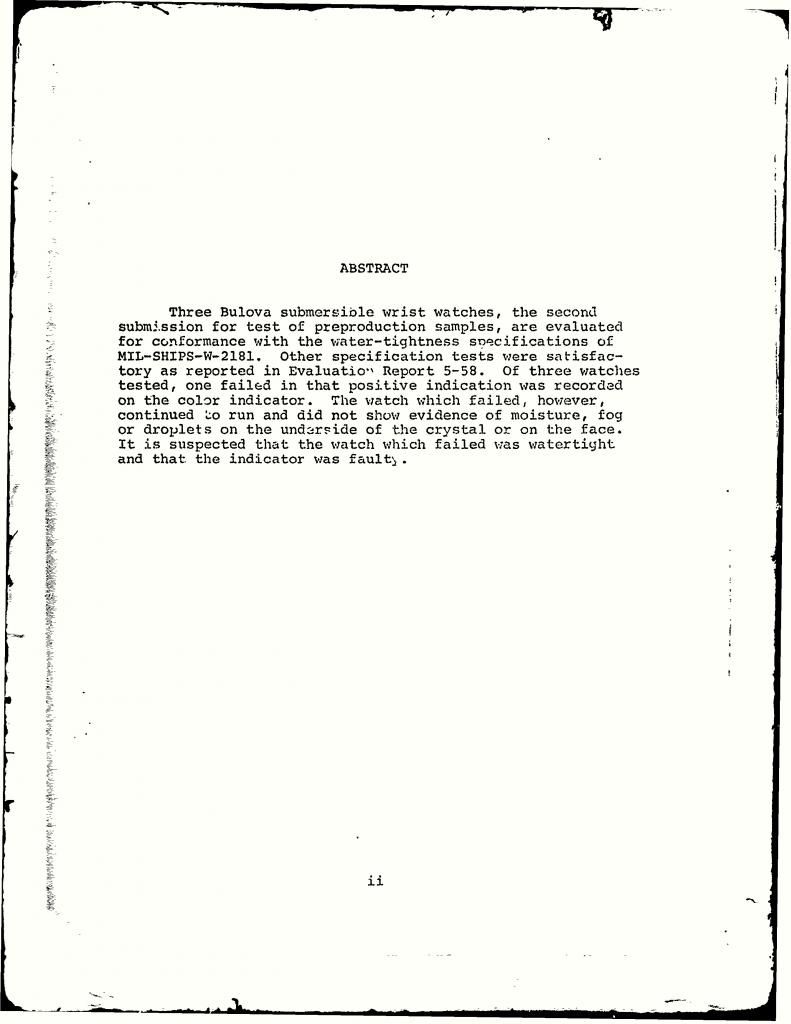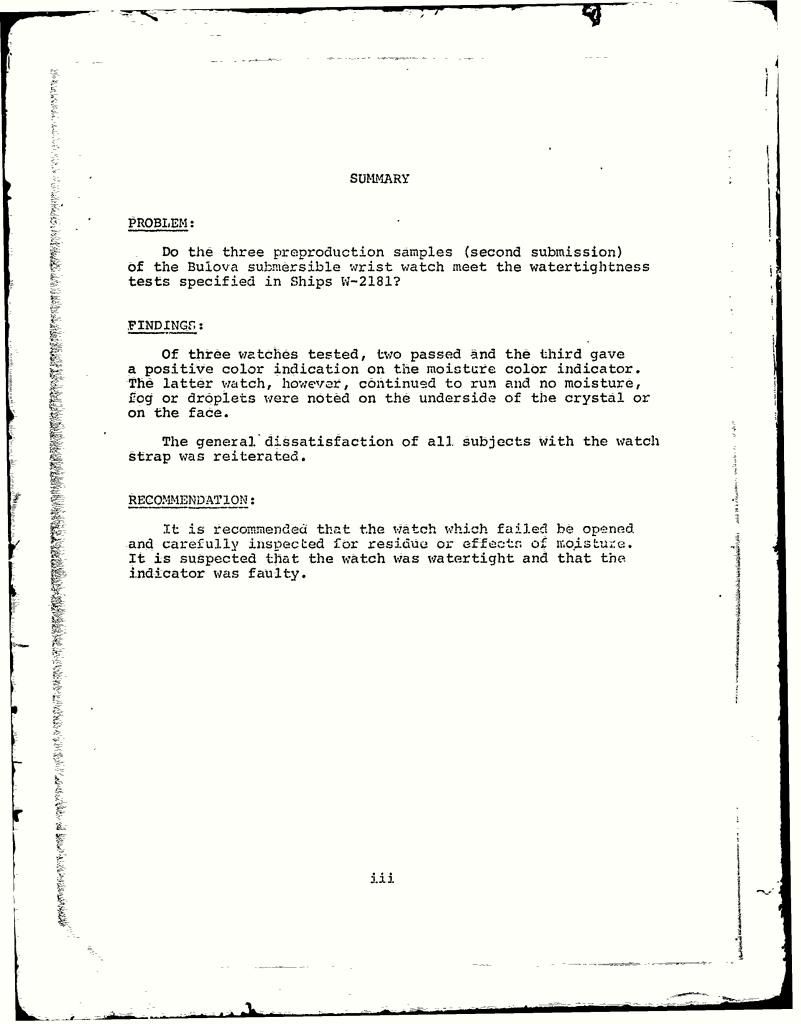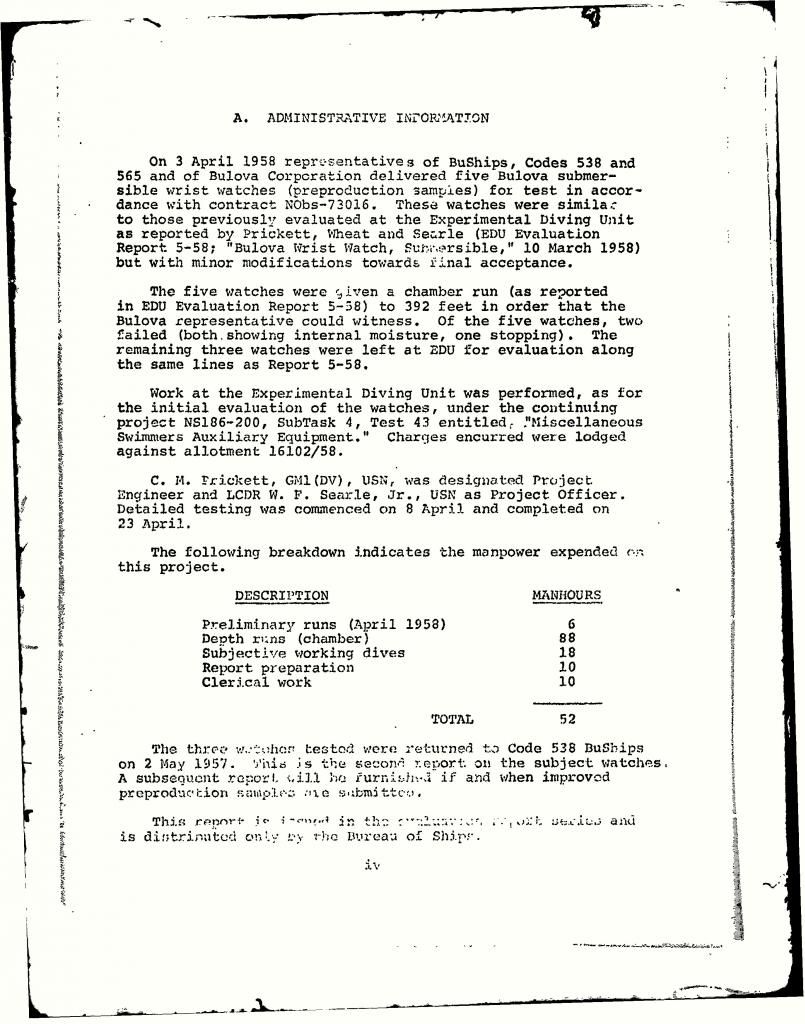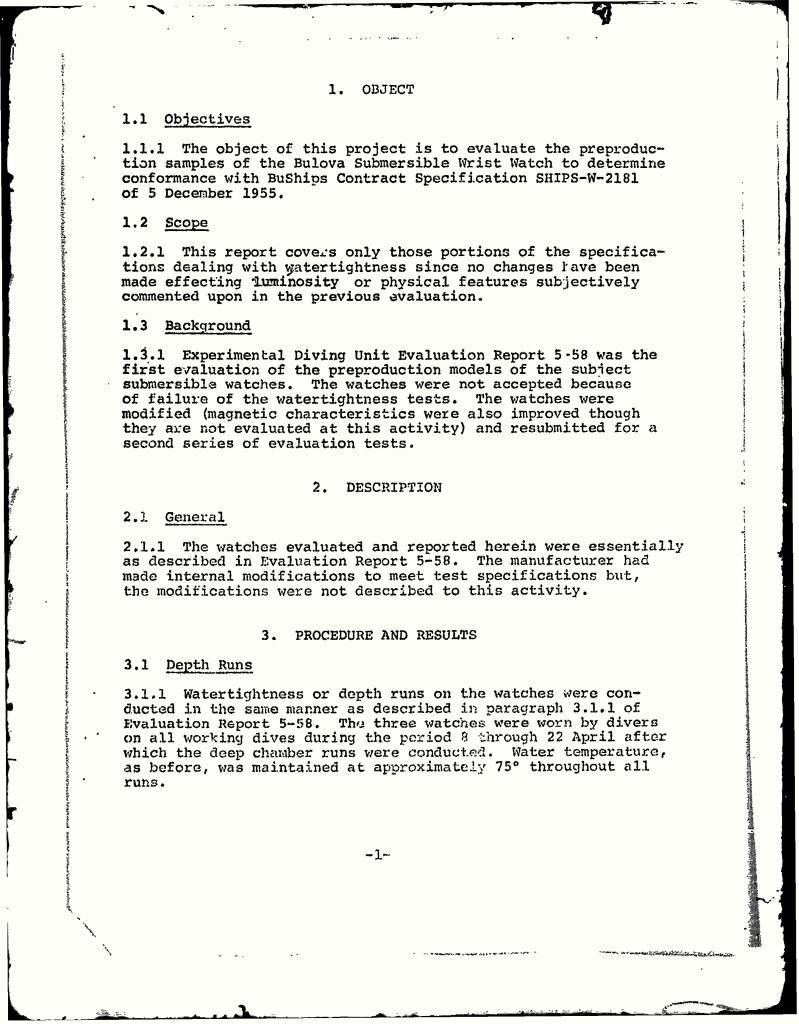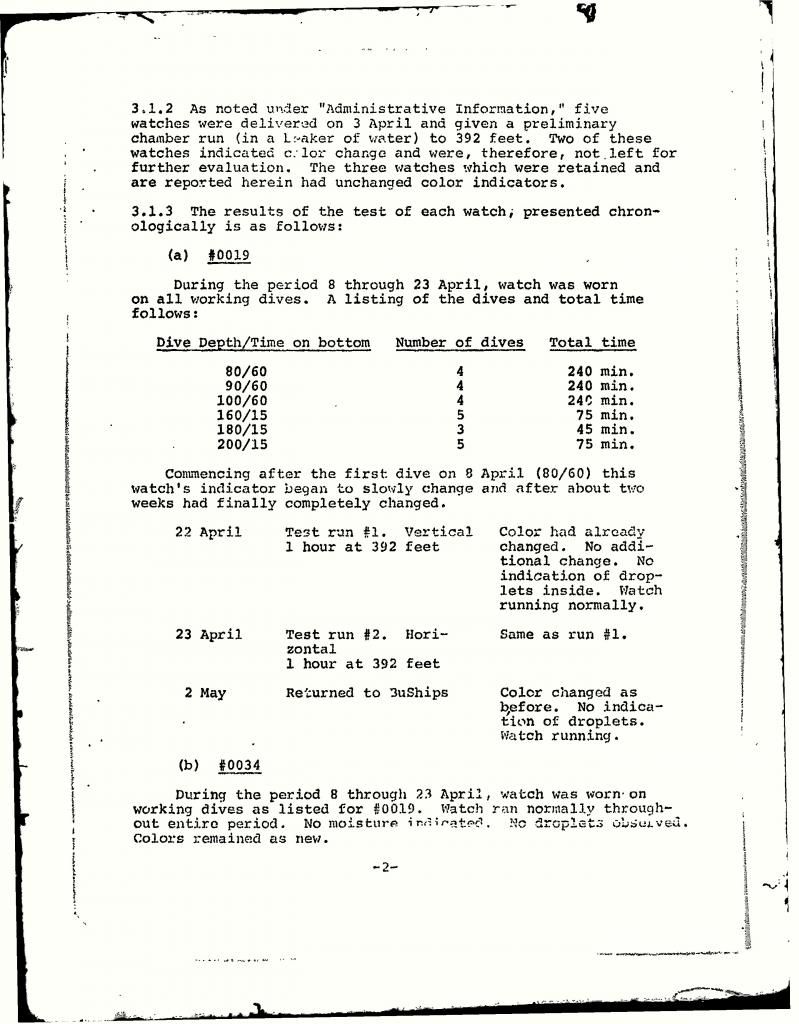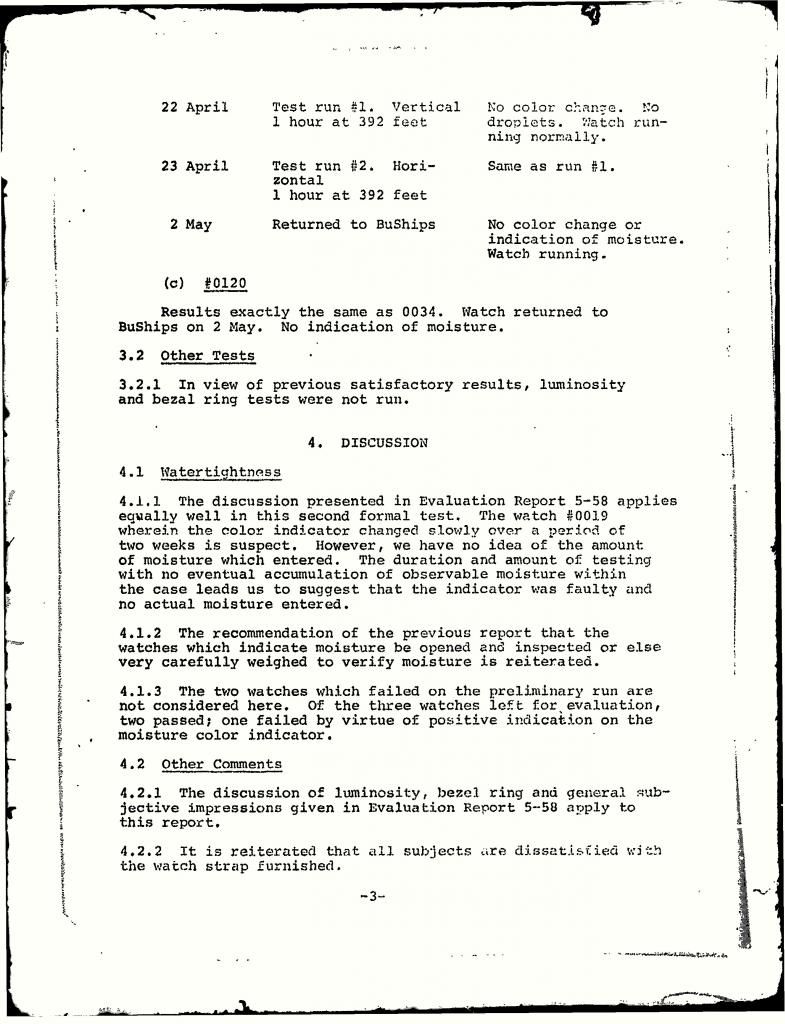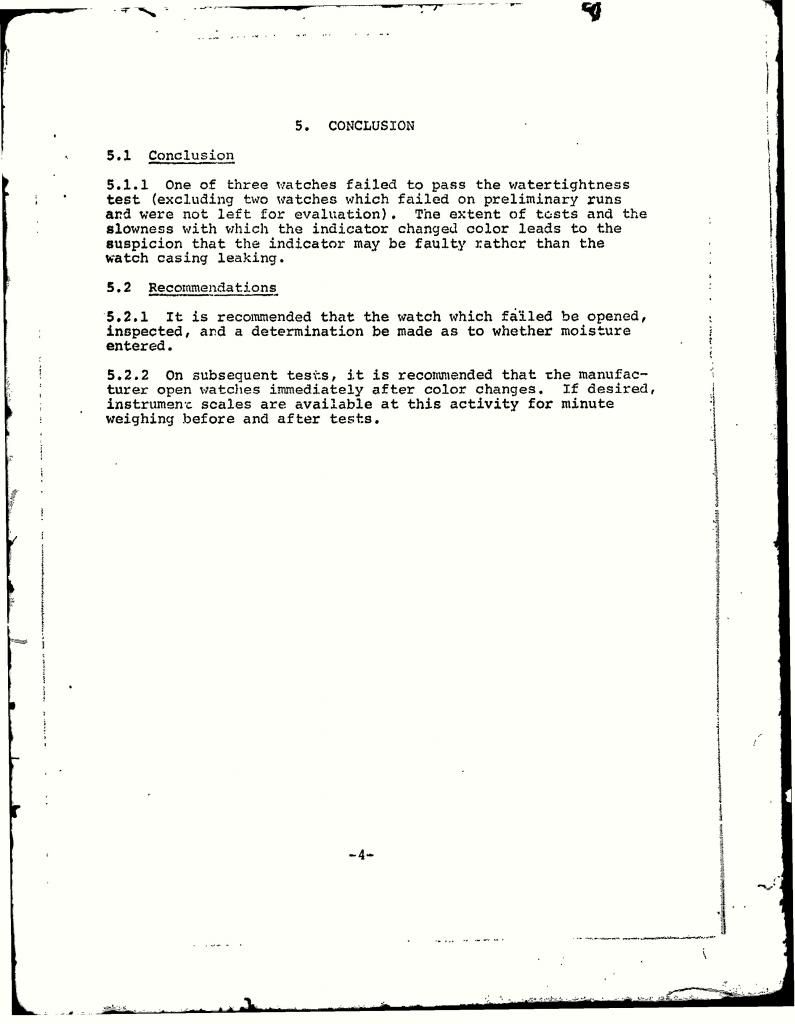
| WWT Shows | CLICK TO: Join and Support Internet Horology Club 185™ | IHC185™ Forums |

|
• Check Out Our... • • TWO Book Offer! • |
Welcome Aboard IHC185™  Internet Horology Club 185
Internet Horology Club 185  IHC185™ Discussion Site Main Page
IHC185™ Discussion Site Main Page  Horological Discussions, Questions and Answers
Horological Discussions, Questions and Answers  Military Timepiece Discussions - EXCLUSIVE!
Military Timepiece Discussions - EXCLUSIVE!  The restoration of my Bulova MIL-W-22176 USN dive watch prototype is finished!
The restoration of my Bulova MIL-W-22176 USN dive watch prototype is finished!
 Internet Horology Club 185
Internet Horology Club 185  IHC185™ Discussion Site Main Page
IHC185™ Discussion Site Main Page  Horological Discussions, Questions and Answers
Horological Discussions, Questions and Answers  Military Timepiece Discussions - EXCLUSIVE!
Military Timepiece Discussions - EXCLUSIVE!  The restoration of my Bulova MIL-W-22176 USN dive watch prototype is finished!
The restoration of my Bulova MIL-W-22176 USN dive watch prototype is finished!Go  | New Topic  | Find-Or-Search  | Notify  | Tools  | Reply to Post  |  |
| IHC Life Member |
Hi everyone. Some of you may remember this previous thread regarding my USN Bulova dive watch prototype... https://ihc185.infopop.cc/eve/forums/a/tpc/f/99010...301085612#1301085612 Well, it's been a year since that post and now I can show everyone the results courtesy of Jack Alexyon at IWW (Industrial Watch Works). To bring everyone up to speed, the watch as I purchased it was missing the bezel but other than that it was complete. A new bezel and insert needed to be fabricated to replicate the original. So how do you make a bezel for a watch that has no documentation? As luck would have it, a fellow collector and now good friend of mine had a case with bezel and partial bezel insert. Unfortunately, he was missing the complete movement, dial, handset, crown, and inner movement holder. After I posted the original pictures of my watch soon after I bought it, a member of this forum Cort Moore contacted me and said he had the exact movement, dial, handset and crown but no case. I told him that was great news as I knew someone that would like to have it to complete his watch. They both worked out an agreement and my friend ended up with everything to compplete his watch except the inner movement holder. He asked me if I would let him borrow my inner movement holder so that his father could machine a copy for his watch and in return, he would have a bezel replicated based on measurements of his bezel. A win-win situation for all. Unfortunately, his father could not do the work so it was sourced out the Jack at IWW. His craftsmen were able to make an extremely close duplicate for my watch and an inner movement holder for my friend's watch. A new bezel insert was made that matched the style and font of the original for both of our watches. Here are the pictures of my watch before the restoration...        The movement serial number is repeated on the caseback.     Here are a few pictures of the completed watch taken by Jack. I won't be able to see it in person until I return home in a couple of weeks.    I've been doing some research into the history of these watches and will post that along with additional pictures after I return back from R&R in early January. Until then, Merry Christmas! James D. | ||
|
James, That looks really great. Keep us posted and YOU take care of yourself. Best wishes for a Merry Christmas and Happy Holidays for you, sir. Best Regards- Clyde | ||||
|
Hey James, That looks like a very fine restoration job indeed! I enjoyed reading this update as it reminded me of the wonderful serendipity, that happened on this site, which helped to advance the project.Rereading the old thread on this was gratifying. The workmanship on the bezel is very impressive. Orchestrating the project from Iraq is a bit awe inspiring too. The finale will be for you to actually put it on your wrist! It will be interesting to see if any others ever show up... best regards, -Cort | ||||
|
| Life Achievement Military Expert |
Impressive work! I look forward to hearing more about it. Thanks, Greg | |||
|
Hi Mr. Delgado. I too am extremely interested in finding out more about the origin and use of this watch. I collect military dive watches and was lucky enough to contribute to Marvin Whitney's Book, Military Timepieces but know nothing about this beauty. Looking forward to your future posts. | ||||
|
That is a great looking watch and a very nice job of bringing it back to its glory. Do you know what that two-tone rectangular area is on the dial, the paint (or something)near the center just under the hands? Also, do you know why this good looking design never went into large scale production? Finally, I would encourage you and your friend to somehow mark your watches, perhaps on the inside of the case backs to say which parts are reproductions so that future collectors will know what parts are the original Bulova prototype and which are good quality reproductions. A person can easily tell by the newness of the reproduction parts compared to the original parts today, but in 20 or 100 years it will no longer be possible. | ||||
|
| IHC Life Member |
Albert R. Betters, Thanks for the kind words. I am currently working a book that will concentrate on US issued watches with a focus on many good detailed pictures of each watch. Most watches in the book will be from my own collection but I would welcome any that you might want to contribute! I am still working out the history of this watch but from what I've uncovered so far, it looks as if this watch was one of three that Bulova submitted for trials to specification MIL-W-22176. Unfortunately, the reports simply state that one of the three failed the mositure test as the indicator on the dial turned color. It looks like the watches were never again submitted before the specifications changed to MIL-W-22176A. This watch bears a striking resemblance to the Blancpain Fifty Fathoms or the USN issued Tornek Rayville TR-900. The TR-900 was made to spec MIL-W-22176A and differs from my Bulova in case design. I'll be including copies of all of the documentation that I have in my book. Jim Hester, Thank you for the kind words. From the time that I received the watch to the finished restoration, it took just under a year and wasn't cheap. The bezel and bezel insert had to be completely recreated and machined very precisely. Jack at IWW must take all of the credit. All that I supplied were the funds! Best, James D. | |||
|
| IHC Life Member |
Jim, The area on the dial that you ask about is the applied moisture indicator. Mine is the original and I left it alone. My friend's was missing from his dial and had to be recreated and in doing so, he had it made to look as it would new. Best, James | |||
|
Thanks James D. I have many issued dive watches, Elgin , Hamilton & Bulova Canteen type, Tornek Rayville, Tudor, Rolex (6205 issued to me),Benrus VN period, Seiko & others used by NCDU & early UDT personell ( private buys) See Marvin Whitney's book Military Timepieces, page 580. Regards Al P.S. strip or dot below hands on dial is a litmus paper w/ water sensitive side to turn dark if exposed to water & waterproof integrity compromised. We can talk direct about contributions to your book at udtone@comcast.net | ||||
|
What I think we see here is a MIL-W-3181 (Ca. 1958) Bulova UDT prototype. In 1958 the U.S. Navy decideded to replace its aging stock of "canteen" diving watches. Retired General Omar N. Bradley, CEO of the Bulova Reseach and Development Laboratory came up with this design based upon the Blancpain 50 fathoms. The version I am aware of is that there were supposedly five prototypes produced, and three of them failed the Navy tests when the moisture indicators read that the watch had water contamination. Bulova abandoned the project, as it is speculated that their efforts were fully committed towards the development of the Accutron model. Bulova wanted their Accutron to be accepted as the NASA watch of choice (Omega won this distinction with the Speedmaster), and simultaniously the American watch industry was rapidly deteriorating. Only two examples of the Bulova protoype are known to exist. In 1961, the U.S. Navy changed the diver specifications to the MIL-W-22176A which reflected several improvements from the Bulova. Several companies competed for the contract, including Longines, but Blancpain won the contract for about 1000 TR-900 watches which were subsequently issued to Navy UDT frogmen and also U.S. Marine Force Recon units in during 1965-1966. These watches were labeled "Tornek-Rayville" after the U.S. distributor. The majority is said to have been issued to the Marines who were expanding the size of their recon units for Vietnam deployment and who, during 1966, received $1M to purchase "carte blanche" all their specialized SCUBA and Parachute equipment. They conducted training in Puerto Rico, St. Thomas U.S. Virgin Islands (submarine insertions), and Panama Jungle Warfare training Center in preparation before shipping out for Vietnam. Today, several companies have reproduced versions of these historic watches since finding one is an impossiblity. MKII Corvus More information Commander Al Betters is certainly the authorty on military diving watches as his contribution to Whitney's book; Military watches is considered the primary authorative source on the subject. | ||||
|
Couldn't resist saying, love the watch! | ||||
|
| IHC Life Member |
Thanks Nathan! Wearing it today at work! | |||
|
Hi James By my count, there were at least eight Bulova’s subject to testing by the Navy – Serial Numbers 0019, 0034, 0036, 0050, 0063, 0078, 0120, 0369. This is based on the US Navy Experimental Diving Unit’s reports: AD-777 761 dated 10 March 1958 (reproduced below) AD-777 669 dated 7 May 1958 (reproduced below) AD 779-113 dated 11 May 1959. Your example is numbered 0127, so at least nine watches were produced. But, based on the serial numbers, would it be reasonable to conclude that at least 369 of these types of watches were produced? When can we expect the release of your book on US mil timepieces?  Regards, Ken | ||||
|
| IHC Life Member |
Hi Ken. Actually by reading the reports thoroughly, you will find a total of 11 that are accounted for in the three reports. Add to that the other three known examples and I have 14 accounted for now.
Correct, these are all of the test reports.
No, it would not be reasonable to conclude that 369 were produced. The watches were not sequentially numbered but were instead numbered based on their movement's serial number. These are in no particular order as can be seen in the reports. I've got even more research on these watches as well as email exchange with CAPT Searle before he died. These watches never made it past the third set of testing. Extremely rare and historic watches.
I've pretty much put the book on the back burner for now. Just way too busy with work. | |||
|
Thanks James for your response. Totally agree that the prototype Bulova USN dive watch is a rare and historic watch. Both the Bulova and the Tornek-Rayville Model TR-900 are certainly great looking watches. My count of the prototype Bulova USN dive watches was based on the serial numbers. Because the serial numbers of the May 1957 test were not provided, I erred on the side of caution when counting, as I didn’t want to double count (for example, watch #0120 was used twice in two separate tests). EDU Evaluation Report 7-58 indicates that Bulova had “made internal modifications to meet the test specifications” since the EDU Evaluation Report 5-58,and there is a possibility that the May 1957 watches were the same watches subsequently test by NEDU but with modifications. With regard serial numbers and whether it could be used as a guide to the number of Bulova prototype dive watches produced, as you point out the serial numbers on the outside case-back correspond to the movement serial numbers. It is my understanding the 10 BPCHN movement was unique and was actually a modified 10 BNCH movement (used, for example, in the 1950s Bulova Type A-17A). Also, it is my understanding (but correct me if I’m wrong) that the 10 BPCHN was only used for the Bulova prototype dive watches. If that is the situation, then wouldn’t the case/movement serial numbers provide a reasonable basis to speculate on the number of prototype watches produced (i.e. at least 369 based on the highest serial number of #0369), providing that the first movement/case serial number was #0001 (given that the lowest case/movement number is 0019, then this assumption seems reasonable)? In addition to the prototype watches identified in the three NEDU reports, presumably the Bulova Watch Company’s research and development department would have also used a number of prototypes for testing (more than NEDU), thus accounting for the fact that there is no particular order of serial numbers provided to the NEDU for testing? Irrespective of the total number of Bulova dive watches prototypes produced, it is a very rare and desirable watch. For completeness, I have provided below a copy of Evaluation Report 24-59.  | ||||
|
| ||||
|
Same prototype Bulova 0355 showed up on Epray yesterday. Was up to $11,000 when I saw it last. Noticed today it was withdrawn from bid. The caseback was not marked with a serial number like James Delgado's example. | ||||
|
| Powered by Social Strata |
| Your request is being processed... |
|
Welcome Aboard IHC185™  Internet Horology Club 185
Internet Horology Club 185  IHC185™ Discussion Site Main Page
IHC185™ Discussion Site Main Page  Horological Discussions, Questions and Answers
Horological Discussions, Questions and Answers  Military Timepiece Discussions - EXCLUSIVE!
Military Timepiece Discussions - EXCLUSIVE!  The restoration of my Bulova MIL-W-22176 USN dive watch prototype is finished!
The restoration of my Bulova MIL-W-22176 USN dive watch prototype is finished!
 Internet Horology Club 185
Internet Horology Club 185  IHC185™ Discussion Site Main Page
IHC185™ Discussion Site Main Page  Horological Discussions, Questions and Answers
Horological Discussions, Questions and Answers  Military Timepiece Discussions - EXCLUSIVE!
Military Timepiece Discussions - EXCLUSIVE!  The restoration of my Bulova MIL-W-22176 USN dive watch prototype is finished!
The restoration of my Bulova MIL-W-22176 USN dive watch prototype is finished!©2002-2025 Internet Horology Club 185™ - Lindell V. Riddle President - All Rights Reserved Worldwide


